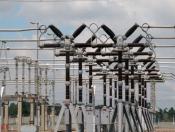Russian cyber-spies target western energy companies
Posted by: Jon Ben-Mayor on 07/01/2014 08:53 AM
[
 Comments
]
Comments
]
A recently uncovered cyber-espionage campaign has been targeting the energy sector; the group known as "Dragonfly" have successfully compromised multiple organizations but stopped just short of causing energy disruptions in any of the affected countries - so far.....
 According to a recent Symantec blog post, among the targets of "Dragonfly" were energy grid operators, major electricity generation firms, petroleum pipeline operators, and energy industry industrial equipment providers. The majority of the victims were located in the United States, Spain, France, Italy, Germany, Turkey, and Poland.
According to a recent Symantec blog post, among the targets of "Dragonfly" were energy grid operators, major electricity generation firms, petroleum pipeline operators, and energy industry industrial equipment providers. The majority of the victims were located in the United States, Spain, France, Italy, Germany, Turkey, and Poland.
The "Dragonfly" group is well resourced, with a range of malware tools at its disposal and is capable of launching attacks through a number of different vectors. Its most ambitious attack campaign saw it compromise a number of industrial control system (ICS) equipment providers, infecting their software with a remote access-type Trojan. This caused companies to install the malware when downloading software updates for computers running ICS equipment. These infections not only gave the attackers a beachhead in the targeted organizations’ networks, but also gave them the means to mount sabotage operations against infected ICS computers.
This campaign follows in the footsteps of Stuxnet, which was the first known major malware campaign to target ICS systems. While Stuxnet was narrowly targeted at the Iranian nuclear program and had sabotage as its primary goal, Dragonfly appears to have a much broader focus with espionage and persistent access as its current objective with sabotage as an optional capability if required.
In addition to compromising ICS software, "Dragonfly" has used spam email campaigns and watering hole attacks to infect targeted organizations. The group has used two main malware tools: Backdoor.Oldrea and Trojan.Karagany. The former appears to be a custom piece of malware, either written by or for the attackers.
Prior to publication, Symantec notified affected victims and relevant national authorities, such as Computer Emergency Response Centers (CERTs) that handle and respond to Internet security incidents.
 According to a recent Symantec blog post, among the targets of "Dragonfly" were energy grid operators, major electricity generation firms, petroleum pipeline operators, and energy industry industrial equipment providers. The majority of the victims were located in the United States, Spain, France, Italy, Germany, Turkey, and Poland.
According to a recent Symantec blog post, among the targets of "Dragonfly" were energy grid operators, major electricity generation firms, petroleum pipeline operators, and energy industry industrial equipment providers. The majority of the victims were located in the United States, Spain, France, Italy, Germany, Turkey, and Poland. The "Dragonfly" group is well resourced, with a range of malware tools at its disposal and is capable of launching attacks through a number of different vectors. Its most ambitious attack campaign saw it compromise a number of industrial control system (ICS) equipment providers, infecting their software with a remote access-type Trojan. This caused companies to install the malware when downloading software updates for computers running ICS equipment. These infections not only gave the attackers a beachhead in the targeted organizations’ networks, but also gave them the means to mount sabotage operations against infected ICS computers.
This campaign follows in the footsteps of Stuxnet, which was the first known major malware campaign to target ICS systems. While Stuxnet was narrowly targeted at the Iranian nuclear program and had sabotage as its primary goal, Dragonfly appears to have a much broader focus with espionage and persistent access as its current objective with sabotage as an optional capability if required.
In addition to compromising ICS software, "Dragonfly" has used spam email campaigns and watering hole attacks to infect targeted organizations. The group has used two main malware tools: Backdoor.Oldrea and Trojan.Karagany. The former appears to be a custom piece of malware, either written by or for the attackers.
Prior to publication, Symantec notified affected victims and relevant national authorities, such as Computer Emergency Response Centers (CERTs) that handle and respond to Internet security incidents.
Comments






